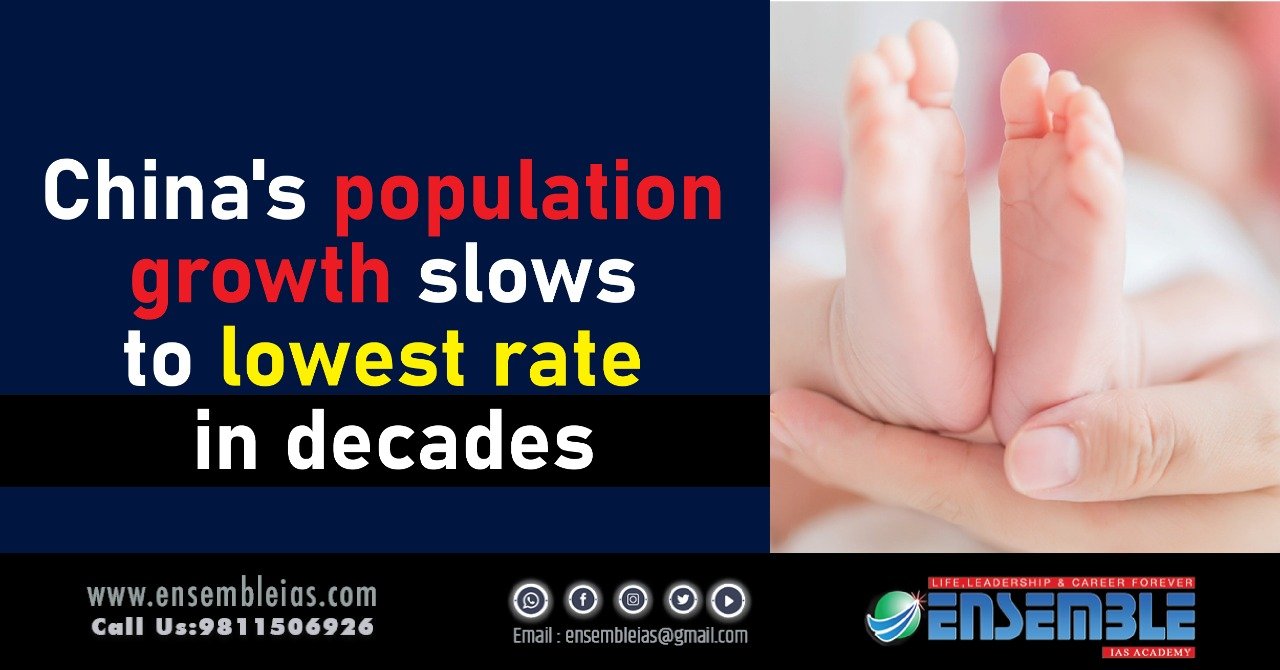China’s population growth slows to lowest rate in decades:
The average annual growth was 0.53%
The seventh census, released on Tuesday by the National Bureau of Statistics (NBS) in Beijing, noted 12 million babies were born last year, the lowest number since 1961, a year when China was in the midst of a four-year famine unleashed by Mao Zedong’s Great Leap Forward policy in 1958 that devastated the farm sector and claimed millions of lives.
China’s population was 1.41 billion in 2020, according to the census, increasing by 72 million since the last census in 2010, recording a 5.38% growth in this period. The average annual growth was 0.53%.
The slowing growth rate, a consequence of China’s stringent family planning rules over decades – known as the “one-child policy” but involving a range of varying restrictions across urban and rural areas – has evoked concerns of a rapidly ageing society and the impact on China’s labour force, and fears that China will, as some experts have said, “get old before it gets rich.”
The census recorded 264 million in the age group of 60 and over, up 5.44% since 2010 and accounting for 18.70% of the population. Those in the 15-59 age group were 894 million persons, down by 6.79% since 2010 and accounting for 63.35% of the population.
Chinese experts on Tuesday acknowledged the seriousness of the problem, without linking it directly to the history of the Communist Party’s harsh family planning policies, at a time when it is planning to mark its 100th anniversary in July. In the lead up to the anniversary, China’s internet regulator said it had deleted more than 2 million posts containing “harmful” discussions of history, the South China Morning Post reported, with the party clamping down on any adverse commentary about its present or past.
China loosened family planning rules and allowed couples to have two children in in 2016, but that has failed to mark a boom amid changing lifestyles and declining preferences, particularly in urban areas, for larger families.
“China will likely enter a period of population decline soon,” Huang Wenzheng, a fellow at the Center for China and Globalisation, in Beijing, told official broadcaster China Global Television Network. “This might be the biggest challenge the Chinese nation faces in the next century.”
The impact on the labour force and healthcare is a particular concern. China’s workforce in the 15-59 age bracket peaked at 925 million in 2011, the Ministry of Human Resources and Social Security said previously. That number was down to 894 million in this census and would drop to 700 million by 2050, according to the ministry.
The census did not offer a specific year for the population to peak, but experts said that could happen by 2025. “China’s population will peak in the future, but there remains uncertainty as to when specifically it will happen,” Ning Jizhe of the National Bureau of Statistics said. “For the next stage, we should continue to pay attention to changes in population growth and respond actively to risks and challenges in demographic development,” he said.
The findings from the census were not entirely dire. The census also shed light on China’s increasingly educated workforce and its rapid pace of urbanisation.
The number of people with a university education was 218 million, up to 15,467 per 100,000 of the population compared with 8,930 in 2010. The average years of schooling for 15 and above increased from 9.08 years to 9.91 years and the illiteracy rate dropped from 4.08% to 2.67%, in part due to policies for nine years of compulsory and free education.
The urban population touched 901 million, accounting for 63.89%, up from 49.68% in 2010 with an increase of 236 million urban residents in the last decade.
(China’s population growth slows to lowest rate in decades)




